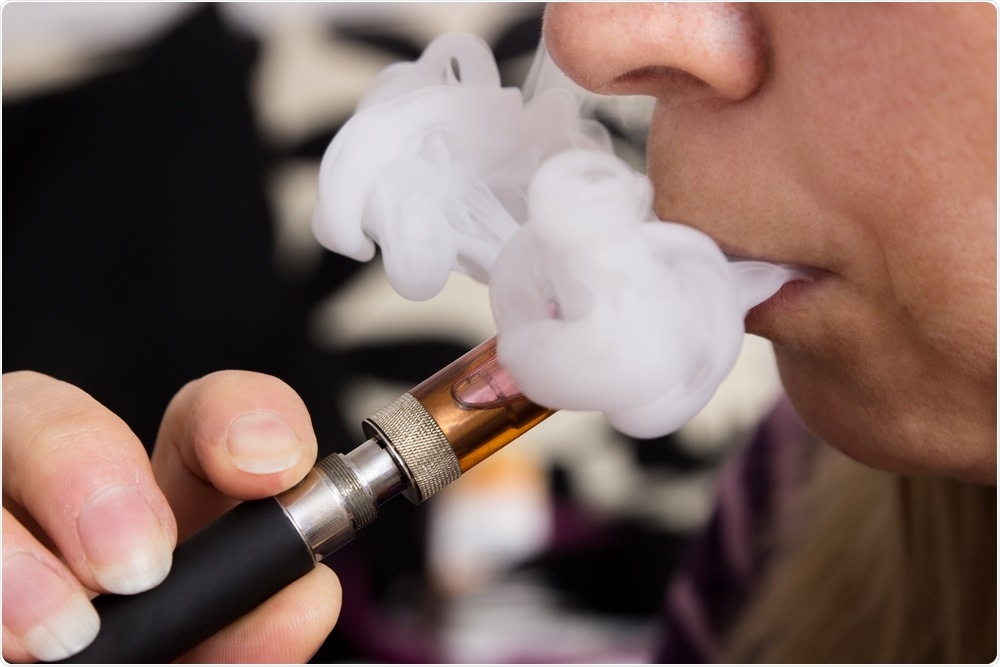Scientists at Harvard University have discovered that two chemicals that are commonly used to flavor e-cigarettes can cause harm to the human lungs.
 Tibanna79 | Shutterstock
Tibanna79 | Shutterstock
The study was the first of its kind to look into the effects of e-cigarette flavoring agents on human epithelium. It showed that two common e-cigarette flavorings can have a damaging effect on the functioning of cilia, small hair-like projections that arise from epithelial cells that line the human airway.
Cilia are found on 50-75% of airway epithelial cells. They play an essential role in sweeping out dust, mucus and other particles from the airways.
Cilia are therefore responsible for keeping the air entering the lungs clean and free of irritants for proper breathing. When the cilia don’t work well, lung function deteriorates, as seen in certain common conditions like chronic obstructive pulmonary disease (COPD) and asthma.
The current study showed that the chemical flavoring agents used in e-cigarettes can affect the expression of the genes encoding ciliary production and function.
More than 90% of tested e-cigarettes contained the flavorants diacetyl and 2,3-pentanedione, along with lesser amounts of other chemicals, according to earlier research by a team headed by Joseph Allen, the senior co-author of the current study.
Diacetyl is a widely used flavoring agent capable of imparting various artificial tastes to food. It is used to produce a buttery taste in microwave popcorn, for instance, as well as to flavor baked foods and candy. The consumption of diacetyl has not been linked to harmful effects thus far, but inhalation is a different matter.
Available research indicates that inhaling diacetyl can harm the lungs, causing bronchiolitis obliterans or ‘popcorn lung’. This is a severe lung condition first seen in workers who inhaled diacetyl whilst manufacturing microwave popcorn.
2,3-pentanedione was substituted for diacetyl in a few facilities after the danger of diacetyl inhalation was reported. However, the effects of inhaling these chemicals have not been studied so far.
The current study used newer techniques to look at how both these chemicals affected epithelial cells arranged to simulate living human airway tissue.
Upon exposing normal human bronchial epithelium to these agents for 24 hours, the researchers saw a significant effect on gene expression, resulting in poor ciliary synthesis and impaired function.
The effects were seen at low levels of inhalation, questioning the current safety limits for workers exposed to these chemicals. In addition, there currently are no safety standards for e-cigarettes, and users are not warned about the dangers of inhaling these chemicals.
E-cigarette users are heating and inhaling flavoring chemicals that were never tested for inhalation safety. Although some e-cig manufacturers are stating that they do not use diacetyl or 2,3-pentandione, it begs an important question; What chemicals, then, are they using for flavoring? Further, workers receive warnings about the dangers of inhaling flavoring chemicals. Why aren't e-cig users receiving the same warnings?"
Professor Joseph Allen, Senior Author
The study was carried out by Quan Lu, Joseph Allen and their colleagues at Harvard T. H. Chan School of Public Health and was published on February 1, 2019 in Nature Scientific Reports.